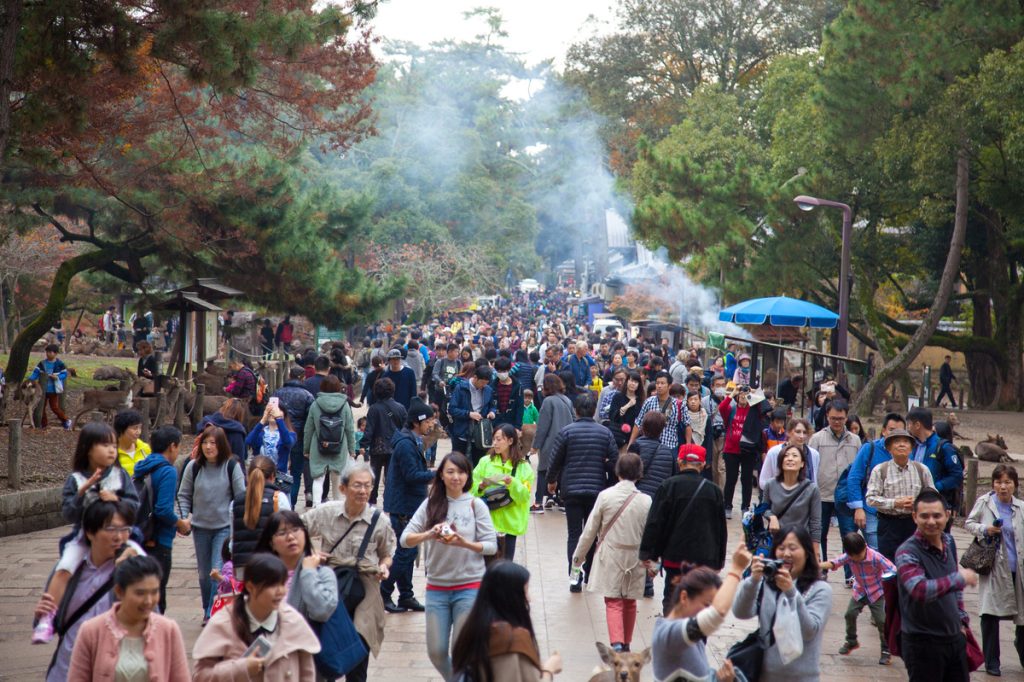Summarize this content to 2000 words in 6 paragraphs
The global travel industry made significant strides in 2024, emerging from the aftermath of the pandemic and seeing significant growth from the previous year. However, the industry still faces several challenges.
So what are the biggest challenges the travel industry faces going into the new year?
We posed that question to our answer engine. Ask Skift 2.0 used information that’s appeared in our past news coverage, and we also did further reporting on the matter.
What Ask Skift Said
As the travel industry heads into 2025, it faces a complex landscape of challenges and opportunities. Here are some of the most pressing issues:
Economic and Political Uncertainty: The re-election of President Donald Trump introduces potential shifts in visa regulations, environmental policies, and trade relations. These changes could impact international tourism, business mergers, and sustainability initiatives. Trump’s approach to international travel restrictions and visa policies could affect the flow of international visitors, potentially altering the global travel landscape.
Sustainability and Climate Change: The industry’s momentum towards sustainable practices could be challenged by a potential rollback of climate initiatives under Trump’s administration. This includes concerns over sustainable aviation fuels and other eco-friendly travel solutions, which may see reduced support.
Technological Integration and AI: The increasing role of AI in personalizing travel experiences is a significant trend. As travelers, particularly Gen Z and millennials, demand more personalized and authentic experiences, travel companies must continue to integrate AI and other technologies into their offerings to meet these expectations.
Labor and Workforce Issues: With potential changes in immigration policy, the travel industry might face labor shortages, especially in sectors reliant on seasonal and temporary foreign workers. This could drive up labor costs and push companies to adopt more automation and digital solutions to mitigate staffing gaps.
Market Dynamics in Key Regions: Regions like the Middle East are navigating both opportunities and challenges, such as expanding the entertainment and luxury travel sectors, and leveraging sports tourism to boost visitor numbers. Additionally, geopolitical tensions could impact regional stability and tourism growth.
Consumer Behavior Shifts: Trends indicate a growing interest in heritage travel and “bravecations,” which are trips or experiences that are adventurous and challenging, and otherwise take travelers out of their comfort zones. f their comfort zones, encouraging them to engage in bold, adventurous, or challenging activities.”
Examples of bravecations include participating in adventurous activities such as skydiving, bungee jumping or rock climbing and participating in physically demanding activities like hiking a mountain and running a marathon.
These challenges require the travel industry to be agile, innovative, and strategic in its approach to growth and sustainability. As the industry adapts to these evolving conditions, it will need to balance opportunities with the complexities of a shifting global landscape.
What Else You Need to Know
Struggles in Going Green: The travel industry’s already massive carbon footprint is showing no signs of decreasing. A recent study in scientific journal Nature Communications revealed that greenhouse gas emissions from international tourism grew at a rate of 3.5% annually between 2009 and 2019 — substantially ahead of the overall global economy.
“The sector has not made much progress in terms of decarbonizing itself,” Ya-Yen Sun, an associate professor at Australia’s University of Queensland in Australia and one of the study’s authors, told ABC News.
In addition, the same study found travelers from higher-income countries produce more than 100 times the tourism-related emissions per person than those living in the world’s poorest nations.
Concerns About Visa Restrictions: The incoming Trump administration has some travel executives concerned about a possible return to more restrictive visa policies that occurred during the first Trump presidency. That administration implemented more enhanced screening, vetting and rejections of visa applicants from countries flagged for higher security concerns like China and several Muslim-majority countries.
As travelers from some of the U.S.’ biggest tourism source markets — such as India, Mexico, China and Brazil — require a visitor visa to stay in the country, tighter visa regulations could make it difficult for the U.S. to attract 90 million visitors by 2026, a milestone Secretary of Commerce Gina Raimondo said it was on pace to achieve.
Inflation: Soaring inflation has made travel more challenging for some consumers, with a Skift Research survey in March revealing that roughly two-thirds of U.S. travelers felt inflation was impacting their trip plans.
Inflation has also presented challenges to several other countries’ tourism industries. Turkey has particularly been hit hard by inflation, which reached 75.4% in May. Those rising prices have made domestic travel more expensive for many Turkish citizens, with restaurant and hotel prices this June 91% higher than in 2023, and driven a growing number of Turks to visit neighboring Greece, where travel expenses are lower.
Inflation has been cited as a reason why more Japanese travelers are opting not to seek accommodation in the country’s major cities. Nikkei Asia reported in October 2024 that the government’s consumer price index data showed prices for accommodation at nearly double their 2020 levels.
Issues With AI: A report released in October by travel technology company Amadeus found that 46% of more than 300 travel executives surveyed across 10 key markets in North America, Europe, and the Asia-Pacific region consider generative AI to be a “top priority” for the coming year -– higher than any other technology. That figure was 61% in the Asia-Pacific region.
That survey also found widespread concerns about generative AI in the travel industry. When asked what, if anything, was slowing down the rollout of the technology, 35% of respondents said data security. In addition, 34% cited a lack of generative AI expertise and training while 33% pointed to data quality and inadequate technological infrastructure.
Indeed, Garry Wiseman, chief product and technology officer for Sabre Travel Solutions, cited issues with data as one challenging aspect of using AI.
“To have effective use of AI, you’ve got to make sure that you have enough quality data to be able to support and train the models effectively,” Wiseman said.
He added: “And so that means, from a travel company perspective, you’ve got to have a strategy to make sure that you’re instrumenting things in your experience effectively today and then also providing those benefits for customers to log in and create profiles so that, again, you can better tailor the experiences to them.”
AI could pose a threat to some travel brands. Anthropic, a generative AI startup, released an early version of a feature earlier this year meant to mimic human travel agents. Alex Bainbridge, CEO of robotaxi tour operator Autoura, said that AI agents will represent the new web user experience, adding that online travel agencies “are in big trouble.”















